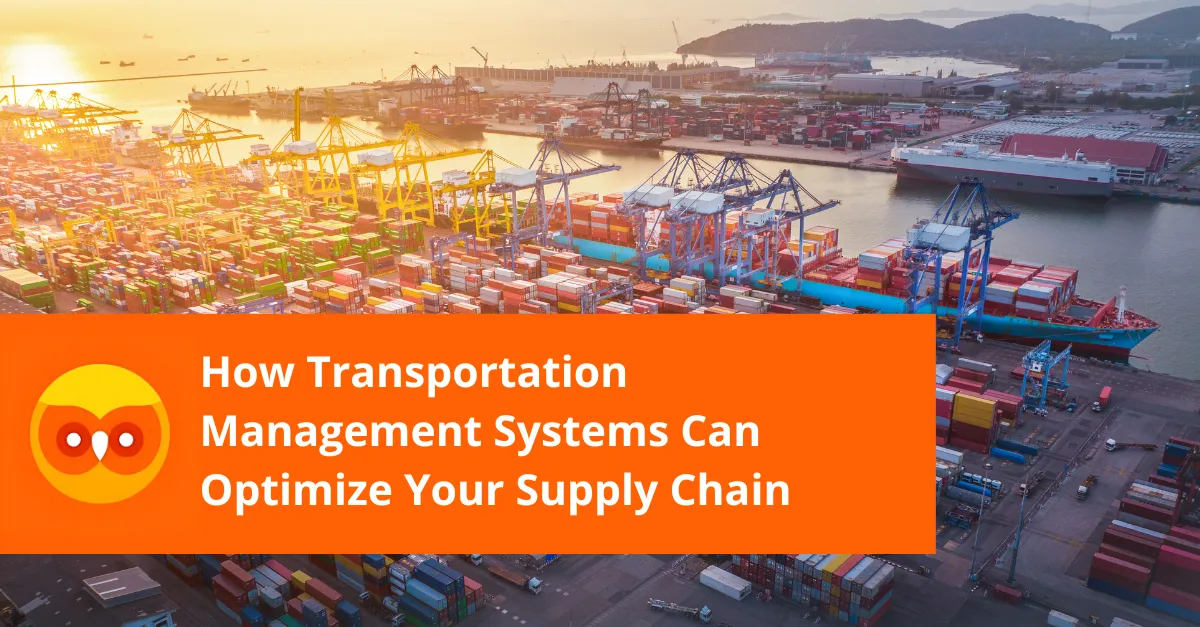As an early adopter of Transportation Management Systems (TMS), I have witnessed significant advancements in logistics technology over the past 40 years. This report shares insights from my experience implementing and operating multiple U.S. domestic TMS programs, as well as my involvement in developing international and ocean-focused TMS solutions.
With today’s global supply chain complexities, businesses need more than just visibility—they need a fully integrated, data-driven system that actively manages logistics operations. This is where WOWL steps in—a next-generation international TMS solution that goes beyond traditional systems, providing real-time monitoring, proactive problem-solving, and seamless global coordination.
Domestic TMS: A Proven Success
Early Adoption and Implementation (1994)
In 1994, I led a team in procuring and implementing a TMS program for domestic U.S. shipments. At the time, these systems were still relatively new and slowly gaining adoption. Our software, installed on in-house hardware, optimized routing for LTL and truckload shipments but lacked integration for parcel shipments due to technical limitations.
Despite these early limitations, the system delivered significant cost savings, achieving a payback period of just six months. It provided major improvements in optimizing multi-stop truckloads, intermodal shipping, and LTL routing.
Evolution of Domestic TMS Technology
Over the years, domestic TMS technology has evolved tremendously. The shift to software-as-a-service (SaaS) platforms has improved accessibility, user interfaces, and overall functionality. Today’s domestic TMS systems offer advanced analytics, real-time tracking, and seamless integration with existing business systems. Parcel shipments, once excluded, are now fully incorporated into optimization and routing.
Domestic TMS is a mature and widely adopted logistics tool in the U.S., providing shippers with unparalleled efficiency and visibility.
Ocean TMS: A Developing Solution
The Complexity of Ocean TMS
Unlike domestic systems, international and ocean TMS development has lagged due to the complexity of global supply chains. Managing ocean freight requires oversight of multiple transportation modes—including ocean, air, and land—while navigating customs regulations, documentation, and diverse carrier relationships. A single shipment may involve trucking, ocean transit, and rail before reaching its final destination, making coordination much more challenging.
Challenges in Ocean TMS Development
Despite advancements, ocean TMS systems remain relatively immature compared to their domestic counterparts. Many still require extensive customization, integration, and configuration to meet the unique needs of each shipper. Additionally, data quality and standardization issues often hinder their effectiveness.
However, cloud-based technologies, artificial intelligence (AI), and machine learning are enhancing the capabilities of ocean TMS solutions. Real-Time Transportation Visibility Platforms (RTTVP) are also gaining traction, providing better shipment tracking and performance analysis.
One of the biggest challenges is that most international TMS solutions were originally designed as Origin Management programs—either focusing on booking and routing at the origin or on visibility and tracking through RTTVP providers. Unlike domestic TMS, which was built as a complete, end-to-end solution, many ocean TMS systems lack full integration across the supply chain.
WOWL is the exception. Unlike traditional ocean TMS, WOWL was designed from the ground up as a fully integrated, door-to-door solution, covering everything from PO management to final delivery. By offering true end-to-end supply chain oversight, WOWL eliminates the gaps in traditional TMS systems, ensuring seamless coordination, real-time data accuracy, and proactive issue resolution across global logistics networks.
Real-Time Transportation Visibility Platforms (RTTVP)
Tracking and real-time data can provide end-to-end shipment visibility, but simply having access to visibility data isn’t enough. Are your carriers meeting their published transit times? How often? Are your shipments being rolled at the origin or transfer port? How frequently, and with which carrier? Are you meeting your TEU commitments with your carriers—and are they meeting theirs?
The key question is: Who is actively monitoring and responding to service alerts from your RTTVP?
A strong visibility program should include:
✔ Performance tracking to measure whether carriers meet their published transit times.
✔ Data integrity checks to assess rolled shipments, delays, and contract compliance.
✔ Proactive monitoring to ensure shipments stay on schedule.
This is where WOWL stands apart—combining smart AI-powered monitoring with real logistics experts who actively mitigate issues as they arise.
While RTTVPs improve supply chain efficiency, they come with challenges:
- Data standardization issues across multiple supply chain stakeholders.
- Integration hurdles between different systems.
- Carrier compliance issues in adopting RTTVP technology.
- Cost concerns regarding implementation and return on investment.
And don’t forget to measure the performance of your RTTVP provider—or your own logistics provider’s RTTVP sources! Visibility alone is not enough; you need the right team and technology to turn data into action.
Key Takeaways
- Domestic TMS technology is highly mature, offering robust analytics, tracking, and integration.
- Ocean TMS technology is relatively immature but developing quickly. It requires significant customization, integration, and configuration to meet the unique needs of each shipper and a high need for more team engagement to make it successful.
- Advances in cloud-based technologies, artificial intelligence, and machine learning are enhancing the capabilities of ocean TMS systems.
- Investing in experienced logistics teams is crucial for maximizing the benefits of TMS technology.
- Real time visibility and tracking data enhance supply chain efficiency, visibility, and customer satisfaction, but require careful consideration and auditing of data quality, system integration, carrier adoption, other engaged providers, and cost.
Recommendations for Ocean TMS Implementation
- Implement a Door-to-Door Ocean TMS Process – Ensure seamless coordination across the entire shipment lifecycle, from origin to destination.
- Leverage Advanced Technology – Invest in a modern, cloud-based Ocean TMS with AI and real-time analytics to optimize routing and reduce transit times.
- Build an Experienced Team – Support your internal team with a reliable logistics provider that offers 24/7 global coverage and local expertise at key origins and destinations.
- Strengthen Origin and Destination Management – "Boots on the ground" support is critical for smooth shipping execution.
- Analyze Key Performance Indicators (KPIs) – Regularly track transit times, on-time delivery rates, and freight costs to measure and improve performance.
- Continuously Evaluate and Adapt – Regularly assess your TMS to ensure it aligns with evolving business needs.
For domestic TMS, if your company hasn’t implemented one yet, what are you waiting for? With over 40 years of development and success, adopting a domestic TMS is a proven way to improve visibility, tracking, and cost efficiency.
Final Thoughts
I have been a strong advocate for TMS programs throughout my career. I love the technology, the data-driven decision-making, and the ability to optimize logistics operations in real time. A well-implemented TMS provides shippers with the power to adapt to market changes, improve carrier selection, and optimize shipping routes efficiently.
If you already have a TMS, WOWL can enhance its capabilities, filling in the gaps with real-time monitoring and intervention. If you don’t have a TMS yet, now is the time to invest in the future of logistics—and WOWL is the solution you need.
Don’t just manage your supply chain—optimize it with WOWL.
Book a demo today to see how WOWL can transform your logistics operations!





